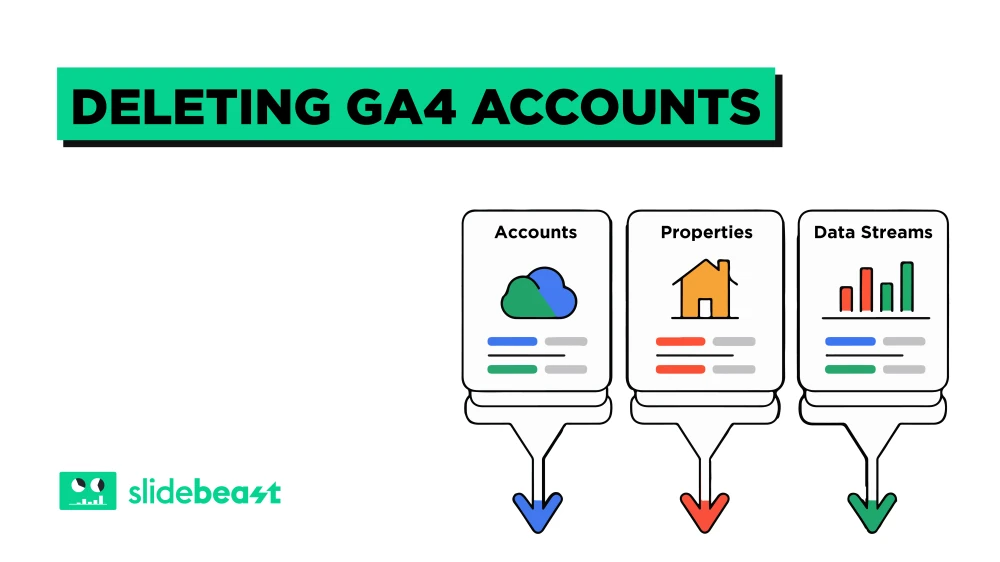Key Performance Indicators are quite possibly the main marketing strategy a business has available at its disposal. While the premise has existed for quite a long time, it is just with the approach of the Internet that its maximum capacity has been figured out. This is especially the situation in estimating on the web commitment, like deals or client procurement. From free instruments, like Google Analytics, to profoundly complex programming, there are various sorts of KPIs estimating massively different measurements.
With regards to setting and following your advertising KPIs, numerous advertisers and markets concentrate on these standard suspects. Be that as it may, there are various other KPIs you ought to follow to execute a more effective computerized promoting methodology — assisting you with distinguishing which missions and strategies are having the greatest effect so you can arrive at your deals and advertising objectives. Nobody needs to help a showcasing movement that is losing their organization cash. By following the correct promoting KPIs, your organization will actually want to make the correct changes in accordance with different methodologies and spending plans.
The Most Significant KPIs to Measure
KPIs can be useful for divisions, representatives, administrators, measures, and even client care groups. Here are the 16 most significant ones that, in our experience, matter most to advertisers.
1) Revenue Generation:
Seeing how much income can be ascribed to digital marketing is significant in knowing how successful your digital marketing campaigns are. No organization needs to burn through cash on something that isn't creating a return. This is something you can track and ascribe to the entirety of your marketing endeavors, and not comparably an entirety. You can perceive how contributing to a blog or web-based media, for instance, affected deals.
There are different models you can use to follow income attribution; consisting of single-contact attribution models that take a gander at your first or last communication, or you can have multi-contact attribution models that gap bargain credit over each touchpoint. With advertising-income attribution, you're looking past the number of leads you shut to the amount of your income that was affected by your promoting endeavors. Following this data is an incredible route for your group to show the estimation of its endeavors.
2) Leads Generation:
- Conversion rate:
Your conversion rate is identified with the number of conversions on your site. It's the level of individuals who go to your site and really convert. To get that rate, your investigation programming takes a gander at the all outnumber of guests to your site in a time frame and partitions it by the number of conversions on your site.
Your conversion rate reveals to you whether you're proficiently producing new leads with your site. A high change rate (like 5%) implies you're giving individuals the data they need and effectively persuading them to reach you. A low transformation rate (like 0.1%) implies individuals aren't getting the data they need and are likely leaving your site for your rivals.
- A Marketing Qualified Lead:
A Marketing Qualified Lead (MQL) is a leader who has demonstrated a premium in what a brand has to bring to the table dependent on showcasing endeavors or is generally bound to turn into a client than different leads. Frequently an MQL is a lead who has deliberately drawn in with your image by performing activities like willfully submitting contact data, selecting into a program, adding web-based business things to a shopping basket, downloading materials, or over and again visiting a site.
- A Sales Qualified Lead:
A SQL, then again, is prepared for direct deals follow-up and ought to be focused on drawing in with one on one. Be that as it may, the specific meanings of MQL versus SQL fluctuate dependent on your client lifecycle and are characterized by advertising and deals.
Characterizing showcasing qualified leads (MQL) and deals qualified leads (SQL) for your association should be done through an organization among deals and advertising. Having sure everybody comprehends the effect among MQLs and SQLs is the establishment of the lead handoff measure.
3) Lifetime Value of a Customer (LTV):
Life Time Value or LTV is a gauge of the normal income that a client will produce all through their life expectancy as a client. This 'value' of a client can help decide numerous financial choices for an organization including promoting spending plan, assets, benefit, and anticipating. It is a vital measurement in membership-based plans of action.
Lifetime Value can be determined from various perspectives. On account of a membership model, a straightforward technique is to take the normal month-to-month sum anticipated from every client and gap it by your stir rate (the rate at which you lose clients every month). For instance, assuming you charge $500 each month and your agitate rate is 5%, your LTV for another client is (500/0.05) or $10,000. For this situation, your client's normal 'lifetime' is 20 months. You can discover more point-by-point approaches to figure LTV for membership-based organizations here.
4) Cost of Customer Acquisition (COCA):
The expense of client procurement or the client securing cost (CAC or CoCA) alludes to the value that you pay to get another client. To comprehend if your showcasing and change system is working you need to realize how to compute the expense of client obtaining. Sorting out the months needed to recuperate CoCA is helpful to decide how solid your plan of action is. It's horrible in the event that it will require three years to recuperate your underlying speculation since you need to reinvest that cash. An extraordinary objective to focus on is anything under a year.
5) Sales Team Response Time:
The meaning of outreach group reaction time alludes to a metric that checks what amount of time it requires to circle back to a lead that has reached a business (either by calling, messaging, or rounding out a structure). Project supervisors can utilize deals with the executives' programming to follow an assortment of call measurements including lead reaction time.
6) Website Traffic to Website Lead Ratio:
The Website Traffic Lead Ratio reveals to you the number of your site guests who convert to leads. This KPI is helpful in light of the fact that it reveals to you the nature of your site traffic. The point is to continue improving your proportion, getting a higher level of lead changes over the long haul. All things considered, your site traffic to lead proportion will differ generally relying upon your industry, however in the event that it plunges under 2-4% it's unquestionably an ideal opportunity to reconsider your substance and lead catch technique.
7) Website Lead to Marketing Qualified Lead (MQL) Ratio:
A decent change rate isn't really a high one. Along these lines, utilizing a normal MQL to SQL transformation pace of 13%, representative or client proposals have a normal change pace of 24.7%, while a messaging effort has a normal pace of simply 0.9%.
8) MQL to SQL Ratio:
Using a normal MQL to SQL change pace of 13%, worker or client suggestions have a normal transformation pace of 24.7%, while a messaging effort has a normal pace of simply 0.9%.
9) SQL to Quote Ratio:
This KPI is an immediate impression of the outreach group's capacity to drop qualified leads down the channel to the statement/proposition stage. Implicit examined the pipelines of many organizations and tracked down that the normal change rate from freedom to client (another method of saying SQL to Win Conversion Rate) was 6%, and took a normal of 18 days to close
10) Quoted to Closed Customer Ratio:
Statement to close is a KPI used to figure out which level of clients a business has contact with and really make a buy. It is estimated by partitioning the real clients or customers who made a buy by the number of possibilities reached or by the number of potential clients who visited the business. In the event that the business conversed with 100 possibilities in a month and 12 of those possibilities made a buy, at that point the statement to close proportion would be 12%.
11) Website Traffic:
Becoming acquainted with your site traffic is tied in with discovering who these individuals are, the place where they're from, and what they did once they got to your site. The entirety of this data can assist you with deciding one exceptionally significant snippet of data: what it is they need from you. Knowing this assists you with expecting and expecting your potential client's necessities is what is the issue here. Likewise, with numerous measurements, site traffic development will fluctuate broadly dependent on the organization stage and crowd. Nonetheless, a month-to-month development pace of 10-20% is by and large thought to be a decent benchmark.
12) Social Media Reach:
Reach is the complete number of individuals who see your substance. Impressions are the occasions your substance is shown, regardless of the off chance that it was clicked or not. Consider arriving at the number of exceptional individuals who see your substance. Ideally, all of your supporters would see each piece of the substance you posted.
- Clicks:
Clicks are perhaps the most straightforward type of commitment to gauge. Anybody willing to tap on a connection to your site or blog is for the most part bound to change over. This implies you're beginning to develop qualified leads, rather than essential traffic. Connection clicks represent generally 92% of client collaboration on Twitter.
- Mentions:
Around 96% of individuals who examine organizations on friendly don't follow that brand's profile. At the end of the day, individuals talk about your organization when you're not in the room. Despite the fact that you probably won't have an immediate association with those people, the things they say about your organization are significant.
13) Email Marketing Performance:
Email advertising can set aside an effort to dominate. It includes remembering best practices for each mission you make, defeating basic youngster botches and streamlining messages for expanded commitment. Be that as it may, these practices alone don't guarantee a positive outcome. You should likewise see how to quantify the consequences of your endeavors. Before you dig excessively profound into picking up all that there is to think about email promoting, make a stride back, figure out what your objectives are for email showcasing, and afterward choose how you will gauge your prosperity.
Here are some email advertising measurements that you should follow in your missions.
- Open rate
Most email crusades normal an open pace of somewhat more than 24%. In the event that you deal with a mission with open rates higher than that, you realize you are accomplishing something right. These email showcasing details are an incredible method to manage your next crusade the correct way on the off chance that you haven't been arriving at your objectives.
- Click-through rate (CTR)
Navigate rates are commonly much lower than open rates. The normal active clicking factor for most missions is somewhat more than 4%.
- List development rate
In all honesty, there's a characteristic rot of your email promoting rundown, and it lapses by about 22.5% consistently - which implies that it's a higher priority than any time in recent memory to focus on developing your endorser rundown and keeping it at a sound size.
- Forwarding rate/email sharing
Sending rate or sharing is a useful measurement to follow on the grounds that it gives you a thought of the number of brand advocates you have. It mentions to you which level of endorsers are prescribing your messages to other people. Creating brand advocates through email promoting is an incredible procedure, particularly considering 81% of customers' buying choices are impacted by companions' online media posts.
14) Inbound Link Building:
External link establishment is the way toward expanding the amount and nature of inbound connections to your site to acquire reference traffic, help space authority, and increment internet search engine rankings.
15) Landing Page Conversions:
The landing page conversion rate reveals to you how well you're doing. A few sites have a couple of points of arrival, while others have handfuls. To realize how well each point of arrival performs, you need to figure the presentation page change rate. It's the level of time your guests convert on whatever you're offering. The average presentation page change rate falls around 2.35%. The top 25% locales are changing over at 5.31% or more, while the top 10% are taking a gander at 11.45% or more.
16) Blog Post Visits:
Your blog entries ought to be a significant supporter of site traffic. We consider blog entries to be a traffic-driving strategy. This implies that it ought to acquire traffic to your site in two different ways. The first is by means of dispersion when it is distributed via online media stages and when it is messaged out to your email list. The second is that it should rank in web search tools for your objective watchwords. The online visits will come as you compose more, produce a more extraordinary substance, and work at improving as an and better blogger as you develop. 100,000 site visits a month is a great deal
Using a blog measurement following instrument, you can realize who is visiting your blog, what pages and posts they're taking a gander at, and how long they're remaining on your blog. By breaking down your blog details, you can figure out where your promotion efforts are working, so you realize where to expand your endeavors and where to diminish them. In any case, before you can sort out your blog details, you need to comprehend the phrasing used by blog detail trackers.








